[This is weird, because, as I noted, Greg’s columns disappeared from the old blog, so I had to find them somewhere, and I found this one, from 5 March 2006 (and the second part of the previous column), here, where it got moved to the CSBG CBR blog for some reason. Of course, that means there are no comments, which is too bad. Enjoy!]
And here we are with part two of this little overview of various licensed comics that should be collected but probably won’t be.
First off, in the comments of last week’s installment, someone mentioned the great Bob Oksner and his work on DC’s Bob Hope and Jerry Lewis books. WAY ahead of you there, pal. Bob Oksner is one of my favorites from my youth and always has been; but thanks for giving me the excuse to link to this article I did for Jonah Weiland back in 2002. [Edit: Look at that old-school design!] I have been helping out with CBR’s San Diego press coverage for the last few years, and one of the bones Jonah throws me every year is letting me cover panels like this that spotlight the older folks in the business, or as the other CBR reporters put it, “Hatcher’s old-guy stuff.”
(Brief tangent: you know, all you younguns out there, it’s a rare gift we have in comics that so many of the people that helped found the industry as we know it are still around, available to talk to and meet at conventions and so on. You do yourselves a huge disservice if you miss the opportunity to hear what they have to say because you are standing in a six-hour line to get Jim Lee’s autograph, because a lot of these older guys aren’t going to be with us that much longer. And they generally are more interesting to talk to and funnier than the Young Hot Flavor of the Month. And as a bonus, you almost never will have to wait in a long line because most fans have no sense of history. End tangent.) [Edit: And get off my lawn, while you’re at it!]
Where was I? Oksner and the Bob Hope and Jerry Lewis stuff.
The great thing about these particular licensed books is that they were pure comics, so to speak; everyone involved with it could do pretty much whatever they wanted, they weren’t handicapped by having to somehow recreate the ‘feel’ of the original property because the likeness and name were all that DC were paying for. Bob Hope, in particular, was one of those books that had everything but the kitchen sink thrown in; it was a wonderful, goofy mess, because comic-book Hope’s only real character trait was that he had a lot of snappy one-liners. Apart from that they could put him in any kind of situation they wanted.
Jerry Lewis, same thing. Oksner himself has said this particular title was his favorite, and it shows. Also, I think Lewis in the 60’s was easier for comics, his screen persona was more about the visual slapstick and thus a better fit for a comic book. Sadly, there’s probably no way anyone’s ever going to reprint this stuff. In my experience it’s damn hard to find these titles and hideously expen$ive when you do, but if you do see these books around, you should grab ‘em, they’re a lot of fun.
*
Another category of licensed comics are the ones coming not from movies or TV, but from the pulps. The most successful pulp adaptations in comics are probably Conan and Ka-Zar — those two are so successful as comic book properties that no one remembers they started as prose fiction characters in the 30’s. You could probably fit Tarzan and John Carter of Mars in here too. Now, Dark Horse is doing a beautiful job repackaging the older Conan and Tarzan stuff, and more power to them, but where’s the John Carter love? Marvel’s John Carter Warlord of Mars was a great book when Marv Wolfman and Gil Kane were doing it and I’d love to see that stuff again too. How about it, Dark Horse licensing people?
And there were other pulps too. Lots of people remember the 70’s DC Shadow series from Denny O’Neil and Mike Kaluta, and that stuff is pretty easy to find in trade reprint — but they may not remember that there was also this pulp hero making his debut at around the same time, under O’Neil and the great Jack Kirby:
It’s kind of weird because you’d think this was not really a Kirby kind of a strip. He’d have been much better on something like Doc Savage or Captain Future if you are going to get Jack Kirby to adapt a pulp to comics. But even so, Justice Inc. is a very cool book, though no one thought so at the time; it only ran a few issues, maybe four or five. O’Neil had a really good handle on how to do pulp comics and his adaptations are among my favorites. In fact, let me add that Mike Kaluta was not the only artist to work with him on the Shadow — there were also some great issues in that run from E.R. Cruz and Frank Robbins and they ALL deserve reprinting.
My favorite Shadow in comics, though, came a decade and a half afterward. It went largely unnoticed and unremarked upon by fans, though I think it was the biggest success Lamont Cranston ever had in funnybooks.
The Shadow Strikes! was from Gerard Jones and Eduardo Barreto and it was simply a terrific book. Jones has a lot of actual historical knowledge of the thirties, which put him in a better position to write 30’s pulp stories than anyone else in comics who’s ever tried it. And Barreto is just plain good, his pages have a great Milt Caniff/Joe Kubert/John Buscema vibe to them, that macho sweaty adventure look. Perfect for a strip like this one. This ran some thirty-plus issues in the 80’s, more than double the run of any other Shadow title in comics. But no one ever mentions it; they always want to talk about O’Neil/Kaluta or Chaykin or Kyle Baker or whoever. But this one was easily the best and truest adaptation of the actual pulp character, and it expanded on the supporting characters in a way no other had done. “Margo’s Story” I remember as being a particular highlight. [Edit: I don’t know if Greg ever addressed it, but there’s now a very good reason for this not to be reprinted!]
Doc Savage has had his ups and downs in comics. There have been some good tries there but none of them ever really caught on. Probably my favorites were the black-and white magazine stories Marvel did in the 70’s to tie in to the George Pal movie. These were from Doug Moench and Tony DeZuniga and they really felt like the original stories.
The magazine only ran eight issues but they are really GOOD issues. A close runner-up would be the books that came out from the now-defunct Millennium Publishing in the early 1990’s. Their strategy was similar to the one Dark Horse has taken with the Tarzan stuff: a series of limited series and one-shots, rather than an ongoing monthly. And they were good stuff, really. Art was better than the story, most of the time, but the stories were certainly serviceable.
Speaking of Millennium, they did some other cool licensed books too. Odd choices for a comics company in the 1990’s; but I loved their books. Here’s two that really ought to be reprinted somehow, some day:
Both were mini-series and read like competent, fun fan fiction. I suspect that the fanfic sensibility is what drove Millennium and that’s why they’re no longer with us, but they gave work to a lot of guys that went on to become solid contributors at Marvel and DC, like Mike Wieringo and Brian Stelfreeze and Darryl Banks, among others. Good stuff and worth tracking down, though it’s going to take some hunting.
*
As long as we’re talking about retro-hip-60’s cool, I’d be remiss not to point out the terrific Jonny Quest book from Comico, another defunct publisher that put out some amazing books while they lasted.
This ran for a couple of years, about 30-some issues. Great stories from William Messner-Loebs and Joe Staton, with a breathtaking array of guest artists doing the covers. The covers alone are worth checking out, but the stories were good too. We got all sorts of background on characters like Jezebel Jade and Race Bannon — a highlight was the story of how Race went from being a private eye to getting a permanent gig as the Quests’ bodyguard, and there were lots of other fun backstory issues like that. Again, fan fiction, but GOOD fan fiction, which is what you want from a licensed book.
And I’m really amazed that no one on this blog, of all places, thought to mention THIS particular 60’s TV property that was done for comics. I’d have thought for sure that would have been the number one priority in the comments section of last week’s column. Because, after all …
… Grant Morrison wrote it. A fine job he did, too — and I’m not saying that just because this blog requires all of us to pimp his work whenever possible. The truth of the matter is that Morrison’s style is quite possibly the best fit for this TV show that any comics adaptation could hope for; he has exactly the kind of screw logic, it’s all about style and ideas and fun sensibility that the Avengers TV show itself had. This was originally a British strip for Acme Press and Eclipse somehow finagled the rights to publish it here in the States back in the 80’s. Ian Gibson did the art and it ran three issues in Prestige format. Very good stuff. The James Bond books Acme put out around the same time have been collected in one form or another over here, I think Dark Horse, again, reprinted those a little while back — but this was a fun series too and deserves more love than it’s getting.
I could go on and on. But I won’t. You get the idea. I do hope, though, that some smart reprint editor sees this and maybe pitches a couple of these to his bosses. Would it cost THAT much for you guys to get the rights to reprint these books, fellas? Think franchise, think bookstore market. You could sell trades of them, I know. Look what bookstores have been able to do with the Buffy and Star Trek franchises. At least consider it.
And if no editor takes up the challenge, well, there’s always the back-issue bins, or eBay. Though the downside of going after licensed comics is that it’s not just comics fans that are after them, you also are competing with movie and TV memorabilia collectors, and those people are seemingly MADE of money. It’s an expensive habit, apparently. But you can find some of these for reasonable prices and it’s worth looking.
See you all next week.

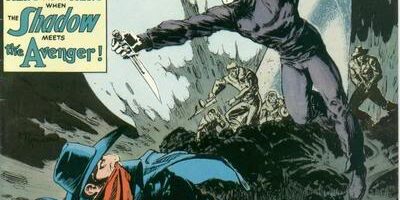
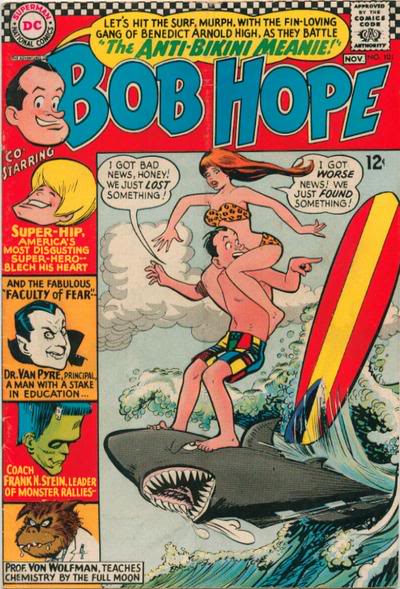
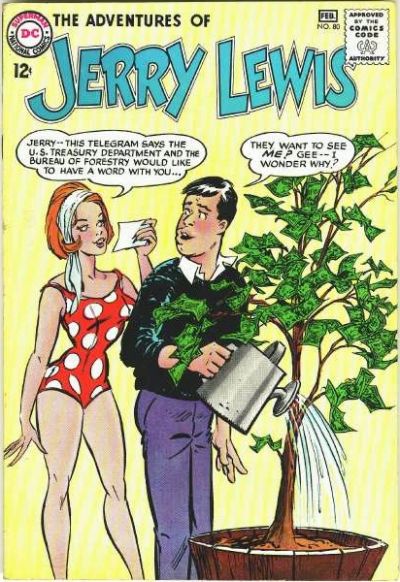
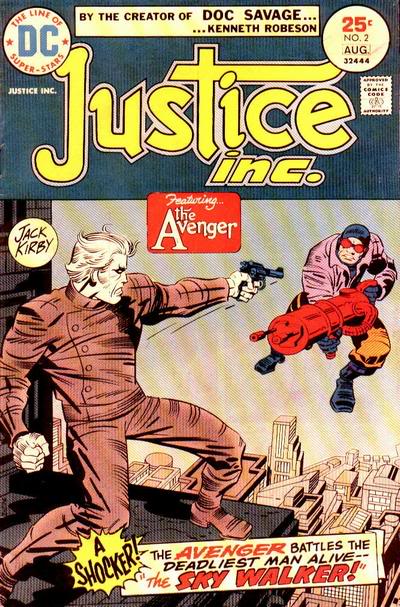
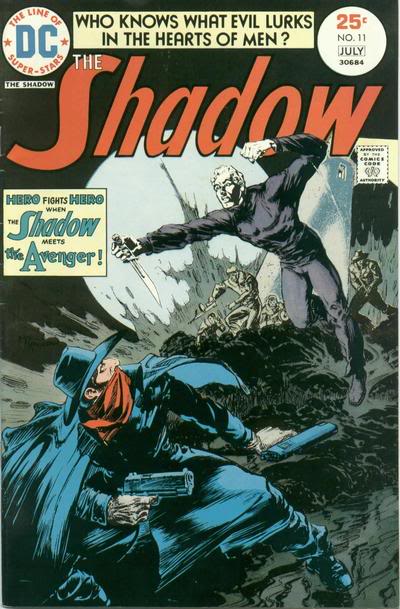
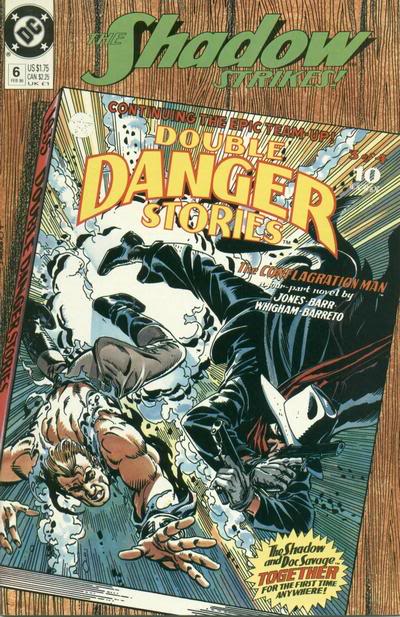
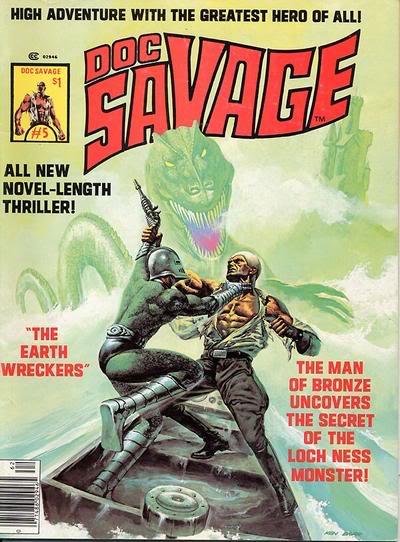
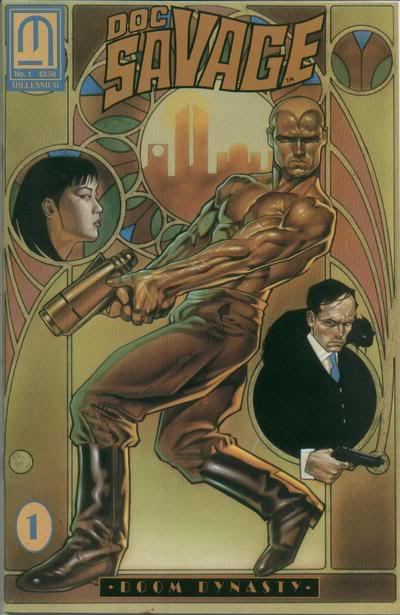
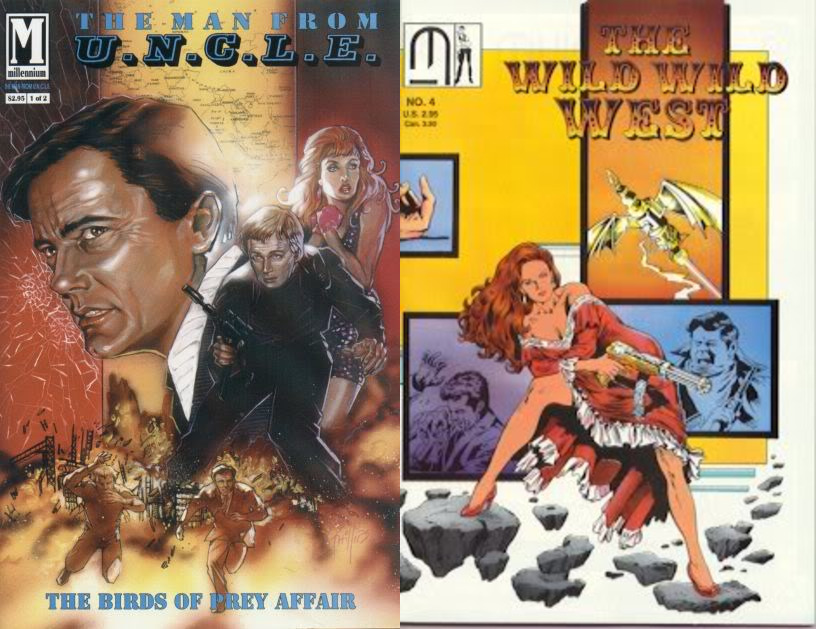
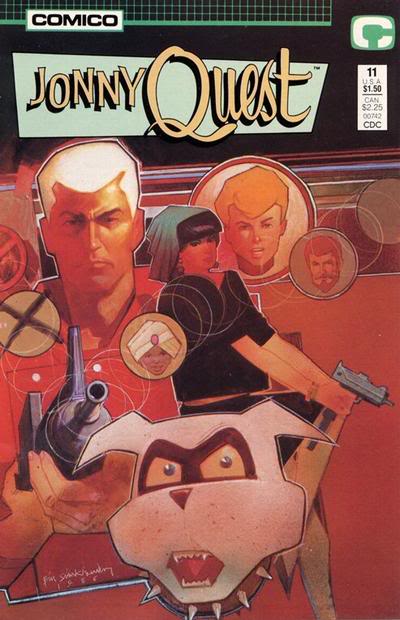
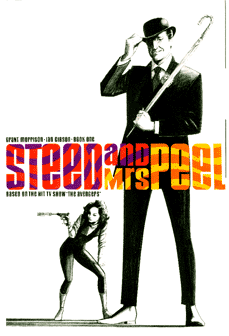
I would love to see the Jonny Quest book reprinted. I have the first 19, then cash flow forced me to quit.
I agree about the B&W Doc Savage book and Millennium’s run — the latter was one of the few times the five aides looked like they’re described. And yes, Shadow Strikes was excellent, with a fun Doc Savage crossover (Mike Barr was writing DC’s Doc Savage at the time. I like that one a lot too). But no, DC won’t touch a Gerard Jones book with a 10-foot pole these days.
Part two reads like my comments from part one, apart from defending Charlton.
Jonny Quest was pure awesome. Stories from Bandit’s point of few, a few from Jade’s, the story of the death of Jonny’s mother, a social worker coming to the Quest compound to assess the boys’ educational and social development and falling into an adventure (and a romance with Dr Quest), Jonny and Haji going on rounds with said social worker and seeing her trying to help humanity in little ways. The story of how Mrs Quest earned the eternal respect and gratitude of Dr Zinn (which might also explain why he hasn’t tried to kill Dr Quest outright), a story seen from t video recording camera, and a story that focuses on Dr Quests reputation and how he uses that to his advantage. Just brilliant stuff, plus some great guest artist, in conjunction with Mark Wheatly and Marc Hempel, as regular artists for much of the run.
Heh, as opposed to my comment to the preceding post, now I’m here to say that most of the material mentioned above still hasn’t been reprinted – with the notable exception of Marvel’s Warlord of Mars (in both a b&w phonebook and then a lovely full-color omnibus) and Marvel’s Doc Savage (published, somewhat ironically, by DC).
But, unfortunately, no reprint of Marvel’s Tarzan, something I’ve been wanting for years now…
Just grabbed that very UNCLE ish out of a dollar bin! And those Justice Incs are some of the last 70s Kirbys I need.
I don’t think I’ve ever seen a Shadow Strikes issue in the wild. I do have maybe one issue of Jonny Quest.
I’d love a DC Finest of Bob Hope during the Super-Hip era, but I’m sure there are rights issues.
In addition to the main Jonny Quest series Comico issued three issues of Jonny Quest Classics, each of which adapted an episode of the show. Adaptations were written, drawn and painted by Doug Wildey, primary creator of the TV show, who produced three of the best comic books of his, or anybody else’s, career. https://www.comics.org/series/3486/